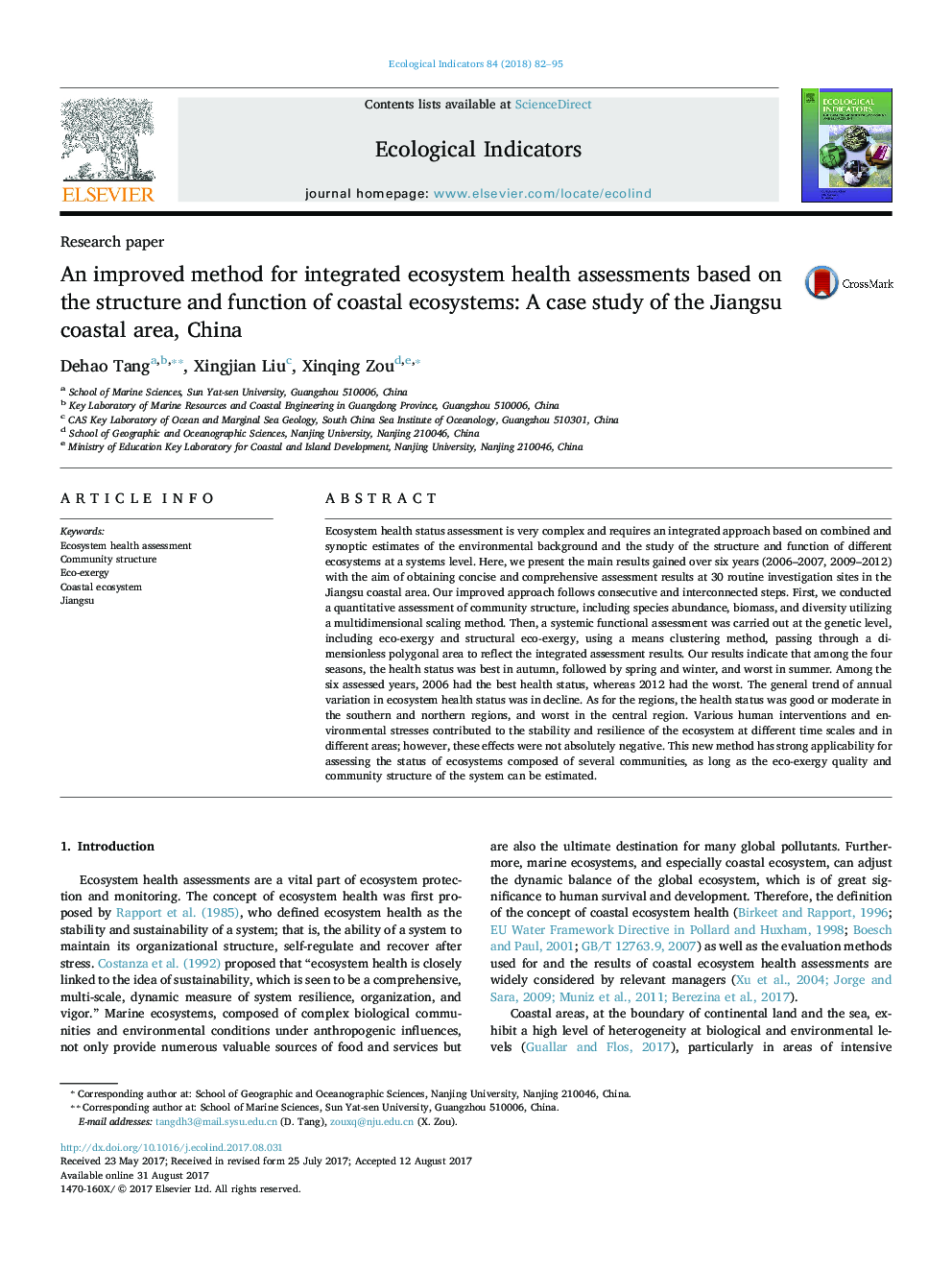| کد مقاله | کد نشریه | سال انتشار | مقاله انگلیسی | نسخه تمام متن |
|---|---|---|---|---|
| 5741531 | 1617118 | 2018 | 14 صفحه PDF | دانلود رایگان |
- Integrated assessment system combines the environmental, structural and functional metrics.
- Spatio-temporal variations of the Jiangsu coastal ecosystem exhibit by polygonal area values.
- The general trend in the annual variation of the Jiangsu coastal ecosystem was worse.
- The health status was good or moderate in the southern and the northern regions, and worst in the central region.
- Environmental stresses contributed to the stability and resilience of the ecosystem.
Ecosystem health status assessment is very complex and requires an integrated approach based on combined and synoptic estimates of the environmental background and the study of the structure and function of different ecosystems at a systems level. Here, we present the main results gained over six years (2006-2007, 2009-2012) with the aim of obtaining concise and comprehensive assessment results at 30 routine investigation sites in the Jiangsu coastal area. Our improved approach follows consecutive and interconnected steps. First, we conducted a quantitative assessment of community structure, including species abundance, biomass, and diversity utilizing a multidimensional scaling method. Then, a systemic functional assessment was carried out at the genetic level, including eco-exergy and structural eco-exergy, using a means clustering method, passing through a dimensionless polygonal area to reflect the integrated assessment results. Our results indicate that among the four seasons, the health status was best in autumn, followed by spring and winter, and worst in summer. Among the six assessed years, 2006 had the best health status, whereas 2012 had the worst. The general trend of annual variation in ecosystem health status was in decline. As for the regions, the health status was good or moderate in the southern and northern regions, and worst in the central region. Various human interventions and environmental stresses contributed to the stability and resilience of the ecosystem at different time scales and in different areas; however, these effects were not absolutely negative. This new method has strong applicability for assessing the status of ecosystems composed of several communities, as long as the eco-exergy quality and community structure of the system can be estimated.
Journal: Ecological Indicators - Volume 84, January 2018, Pages 82-95
